News
As an emerging environmentally friendly green product, pulp molded products Can be recycled from the raw materials, production process to the final disposal of waste. There are two main production processes for pulp molding:
One is the wet pressing process; the other is the common traditional process (i.e. dry pressing).
The raw materials used in the production of disposable tableware items and High-grade industrial packaging products are generally bagasse pulp, bamboo Pulp, straw pulp, rice straw pulp, reed pulp and other paper pulp. So what is the difference between the different pulps? Take a look below.
Pulp Molding Raw Material 1: Bagasse Pulp Bagasse pulp is a very good raw material for pulp molding products. The production of pulp molded lunch box tableware products mostly use bagasse fiber. Bagasse pulp is based on bagasse as raw material, after chemical or biological pulping, made of bagasse pulp. Bagasse fiber is a medium-length fiber, with moderate strength, moderate toughness advantages, is currently the most suitable raw material for pulp molding products, so bagasse pulp products are currently the most widely used. At present, bagasse fiber is mostly used in lunch box tableware products, and some high-end cell phone tray and cosmetic packaging also use this raw material. The origin of bagasse pulp is all over the world, Southeast Asia, such as Thailand, America, such as Colombia, Mexico, Brazil, the Middle East, such as Iran, China's Guangxi, Yunnan and other places. These areas are heavily planted sugar cane, there are many sugar cane factories, sugar cane in the raw material of sugar cane factories, and bagasse is originally the waste of sugar cane factories, but many sugar cane factories have set up bagasse pulp mills using bagasse to make pulp for supplying to paper mills and pulp molding plants. With the development of pulp molding technology and market, the industrial chain of many bagasse pulp mills began to extend to pulp molding products.
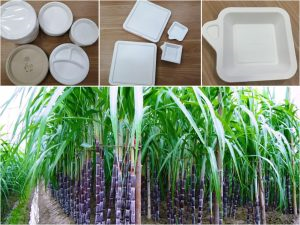
Pulp Molding Raw Material 2: Bamboo Pulp Bamboo pulp is a good pulp molding (plant fiber mold) products raw materials. Bamboo fiber belongs to the medium-length fiber, performance between coniferous wood and broadleaf wood, the main production of high-quality products, tableware products have a small amount of addition. The use of bamboo pulp products produced by strong toughness, production of deep products are not easy to crack, smooth and delicate surface and high whiteness. However, the surface of the product is easy to appear after friction fluffy fluffy fibers. The use of bamboo pulp should be grinded to eliminate the phenomenon of fluffy fibers on the surface of the products. Bamboo pulp is mostly used in the manufacture of high-grade cell phone packaging inner tray, cosmetic packaging, but also used in the manufacture of tableware, is a good pulp molding raw materials. The production of products with complex shapes, small slopes and R angles generally require the addition of a certain percentage of bamboo pulp. Because bamboo pulp resources are more valuable, the price is slightly higher compared to bagasse pulp, so it is currently used with bagasse fiber in a certain proportion to increase performance and reduce costs. There are bamboo pulp production plants in the north of China, Sichuan and Jiangxi.
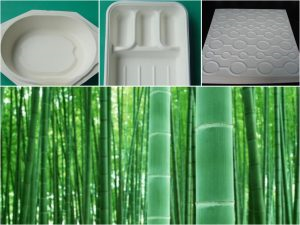
Pulp Molding Raw Material No. 3: Wheat Straw Pulp Wheat straw pulp, divided into mechanism fiber wheat straw pulp, chemical mechanical wheat straw pulp and chemical wheat straw pulp, mainly produces tableware products. Wheat straw pulp fiber is short, wheat straw pulp pulp molded products smooth and delicate surface, good stiffness, the product is very brittle, poor flexibility, most of the pulp molded tableware products can be 100% wheat straw pulp as raw materials. The appearance of natural color wheat straw pulp products is smooth and beautiful. But for the complex shape, depth of the wheat straw pulp products, the general production process needs to be added to the long-fiber pulp for blending, to increase the toughness of its products. Wheat straw pulp is mostly primary color pulp. Bleached wheat straw pulp is less seen in the market. Wheat straw pulp is mostly found in Shandong Province, China and northern China. Because the world, especially in the north of China, the wheat planting area is very large, a large number of wheat straw can not be dealt with, so the production of wheat straw pulp has a broad prospect, but the yield of wheat straw pulp is relatively low.
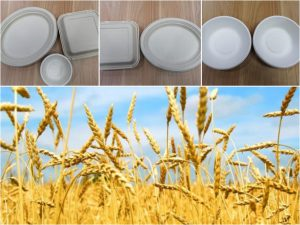
Pulp Molding Raw Material No. 4: Reed Pulp Reed pulp fiber is short, reed pulp pulp molded products surface smoothness is not as good as bagasse pulp, bamboo pulp, wheatgrass pulp products, stiffness is general, but also not as good as bagasse pulp, bamboo pulp, wheatgrass pulp; reed pulp pulp molded products are more brittle, poor flexibility; reed pulp contains more impurities. Most of the pulp molded tableware products can use 100% reed pulp as raw material. The appearance of reed pulp products is not too bright and beautiful and more impurities. However, for complex shapes and deeper reed pulp products, it is generally necessary to add long-fiber pulp in the production process for blending, to increase the toughness of the product and the surface of the ornamental. Reed pulp is mostly found in China's Jiangsu, Zhejiang and Shandong provinces and China's Xinjiang province. Especially near the mouth of the Yangtze River in China, there is a large amount of reed production, so the production of reed is rich in resources, and the yield of reed is also relatively low.
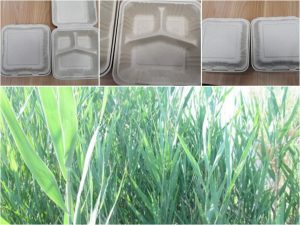
Pulp Molding Raw Material No. 5: Palm Pulp Palm pulp is also a good raw material for pulp molding products. Palm pulp is mostly natural color (primary color) pulp, mainly for the production of tableware products. Palm oil mills in the palm fruit oil extraction, the remaining palm fruit fiber extraction to produce palm pulp, and then use palm pulp to produce pulp molding (plant fiber) products. Palm pulp molded products have a beautiful appearance, good stiffness and natural plant fiber color. The length of palm fiber is close to that of wheatgrass fiber, but the yield is higher than that of wheatgrass fiber. Although palm pulp has more impurities, but these impurities are also plant fibers, so palm pulp products look very beautiful, very natural, very environmentally friendly. It is a very good environmentally friendly product. Palm oil mills are very numerous around Southeast Asia. As early as 2000 years ago, the Malaysian government introduced a comprehensive utilization of palm fiber incentive policy to encourage enterprises to further develop and utilize palm fruit fiber .
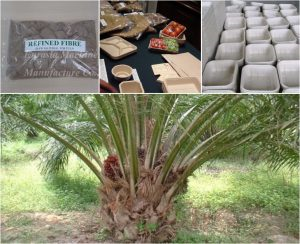
Pulp Molding Raw Material No. 6: Wood Pulp Wood pulp is also a raw material for the production of pulp molding products, mainly used for the production of high-end industrial bag products. Wood pulp is mainly divided into coniferous pulp and broadleaf pulp, wood pulp used to produce pulp molded products are generally coniferous pulp and broadleaf pulp used in conjunction with each accounted for a certain percentage. Coniferous pulp fibers are long and fine, pulp is relatively pure, less impurities. Broadleaf pulp fiber is thick and short, and contains more impurities, the finished product strength is relatively low, the finished product is relatively loose, strong absorption properties, high opacity. Coniferous pulp manufactured pulp molded products with good flexibility, high folding resistance, good tensile strength. Broadleaf pulp made out of pulp molded products loose thickness, high stiffness, good packaging performance. Therefore, the thickness and density of products produced by different wood pulp will be different.
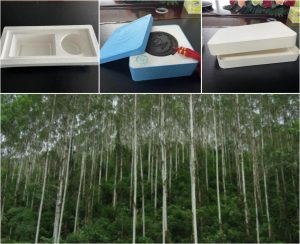
 +86 189 2452 1063
+86 189 2452 1063 s-dzhiyuan@163.com
s-dzhiyuan@163.com 18924521063
18924521063




Online Message

Follow Us


Top